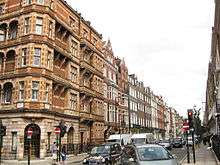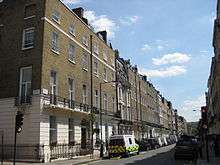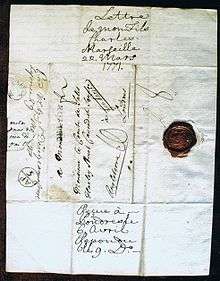Harley Street




Harley Street is a street in Marylebone, central London, which has been noted since the 19th century for its large number of private specialists in medicine and surgery. It was named after Thomas Harley who was Lord Mayor of London in 1767.[1]
Overview
Since the 19th century, the number of doctors, hospitals, and medical organizations in and around Harley Street has greatly increased. Records show that there were around 20 doctors in 1860, 80 by 1900, and almost 200 by 1914. When the National Health Service was established in 1948, there were around 1,500. Today, there are more than 3,000 people employed in the Harley Street area, in clinics, medical and paramedical practices, and hospitals such as The Harley Street Clinic and The London Clinic.[2][3]
It has been speculated that doctors were originally attracted to the area by the development of commodious housing and central proximity to the important railway stations of Paddington, Kings Cross, St Pancras, Euston and, later, Marylebone. The nearest Tube stations are Regent's Park and Oxford Circus.
Land ownership
Harley Street is part of the Howard de Walden Estate.
Notable occupants
Many famous people have lived or practised in Harley Street, including the Victorian Prime Minister William Ewart Gladstone, the artist J. M. W. Turner and the speech therapist Lionel Logue. Queen's College, founded in 1848 and one of the oldest girls' schools in England, is situated on Harley Street.
- Masud Khan, notable Pakistani psychoanalyst, lived and worked from No.8.[4]
- Sir William Beechey (Portrait painter) lived at No.13.[5]
- Sir Grantly Dick-Read (Obstetrician) lived and had his practice at No.23. Green Plaque.[6]
- J.M.W. Turner (Landscape painter) lived at No.64 from 1799 to 1805.[7]
- Sir Stewart Duke-Elder (Ophthalmologist) lived & worked at No.63. Blue Plaque.[8]
- Lionel Logue (Speech therapist), from Australia, had his practice at No.146. He helped King George VI overcome his stammer with lessons here. There is a Green Plaque.[9]
- Allan Ramsay (Portrait painter) lived at No.67.[10]
- Sir Harold Ridley (Pioneering Ophthalmologist). Lived at No.53.[8]
- Stafford Northcote, 1st Earl of Iddesleigh (British Politician, Conservative Chancellor of the Exchequer) lived at No.86.[5]
- George Frederick Bodley (Greek Revival Architect) lived at No.109 from 1862 to 1873. Blue Plaque.
- Harriet Harman MP QC, Labour politician, born at 108 Harley Steet.
- William Henry Giles Kingston, Victorian author of boys' adventure novels, was born on Harley Street, 28 February 1814.[11]
- Sir Charles Lyell (lawyer, author and geologist). Lived at No.11 (which is now No.73).[12]
- Charles Wilson, 1st Baron Moran, Winston Churchill's personal physician, had a private practice at No. 29 during the 1920s and 1930s.[13]
- Sir Arthur Wellesley, the future Duke of Wellington, had his first London residence in Harley Street.
- John St. John Long, a famous quack, practiced in Harley Street from 1827–1834.
- Sir James Galloway (1862-1922), dermatologist, practised at No. 54
See also
- List of eponymous roads in London
- Macquarie Street, Sydney
- Rodney Street, the Harley Street of the North, in Liverpool
- Welbeck Street
- Wimpole Street
References
- ↑ "Ledbury & District U3A Local History Group". Malvern Gazette. 5 November 2016. Retrieved 6 November 2016.
- ↑ History of Harley Street at Harley Street Guide (commercial website)
- ↑ Alisha, Ali (14 July 2013). "Psychological Therapy in London". London: The Private Therapy Clinic. p. 7-8. Retrieved 19 September 2016.
Counselling Approaches
- ↑ Linda Hopkins (31 December 2008). False Self: The Life of Masud Khan. Karnac Books. pp. 9–. ISBN 978-1-78049-403-6.
- 1 2 Henry Benjamin Wheatley; Peter Cunningham (24 February 2011). London Past and Present: Its History, Associations, and Traditions. Cambridge University Press. pp. 192–. ISBN 978-1-108-02807-3.
- ↑ Grantly Dick-Read
- ↑ "The Turner Society".
- 1 2 David J. Apple (2006). Sir Harold Ridley and His Fight for Sight: He Changed the World So that We May Better See it. SLACK Incorporated. pp. 50–. ISBN 978-1-55642-786-2.
- ↑ "Historical plaques about Lionel Logue Open Plaques".
- ↑ Christopher Hibbert; John Keay; Julia Keay (23 March 2010). The London Encyclopaedia. Macmillan. ISBN 978-1-4050-4925-2.
- ↑ Modern English Biography: Containing Many Thousand Concise Memoirs of Persons who Have Died Between the Years 1851-1900
- ↑ "Sir Charles Lyell Facts, information, pictures - Encyclopedia.com articles about Sir Charles Lyell".
- ↑ Oxford Dictionary of National Biography, Volume 59. Oxford University Press. 2004. p. 503. ISBN 0-19-861409-8.
External links
- The Harley Street Guide
- George Harley, doctor/3230 at Who Named It?
Coordinates: 51°31′14″N 0°08′52″W / 51.5206°N 0.1477°W